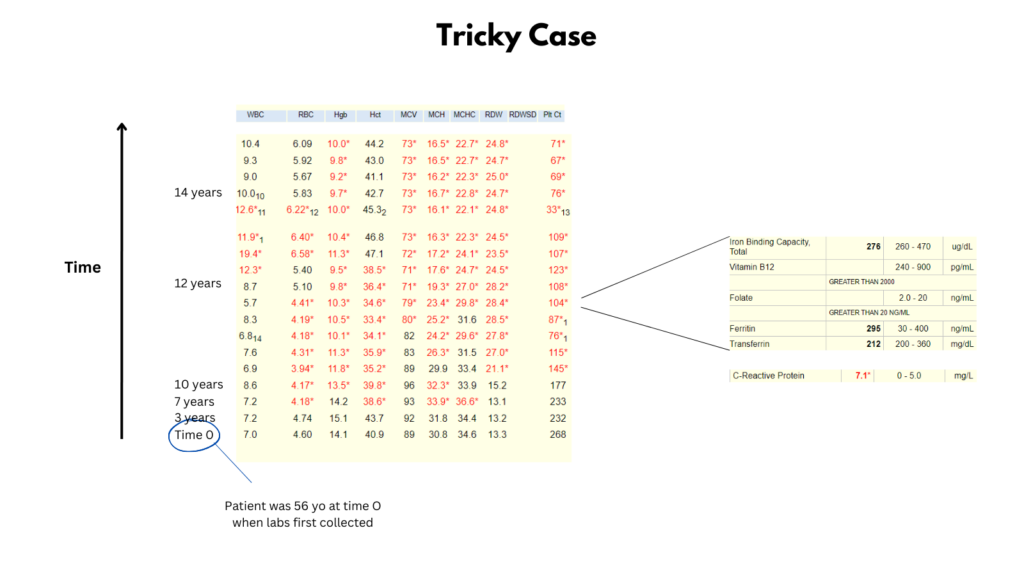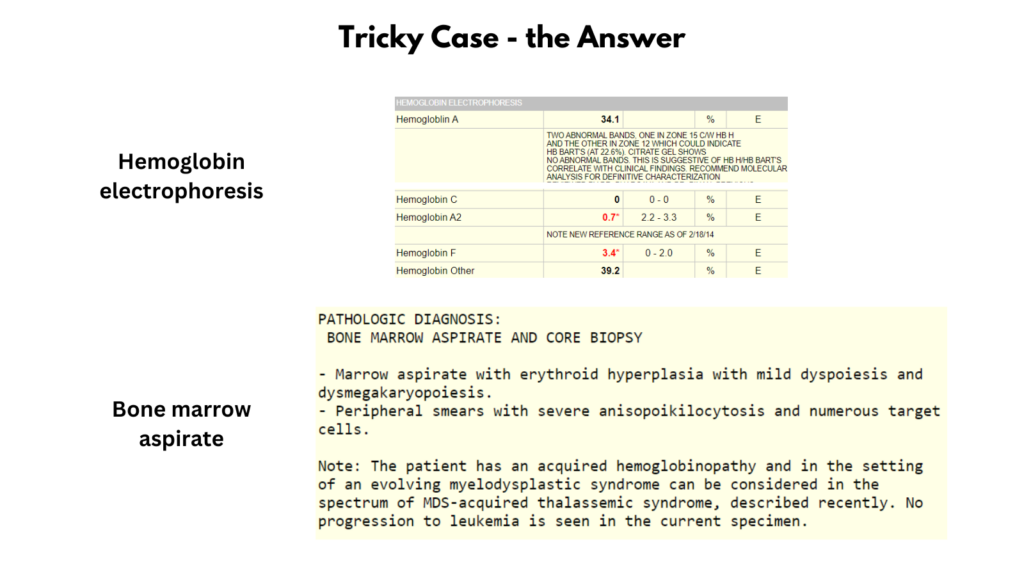Case
Prev
1 / 1 Next
Prev
1 / 1 Next

- In the CBC time series above, note that the results were normal at time 0 and 3 years later. The patient then develops anemia, which begins as normocytic and then changes to microcytic.
- Over time, the mean cell volume (MCV) falls further as does the MCHC.
- The MCHC becomes so low that the patient becomes anemic with a normal Hct (MCHC = Hb/Hct).
- the platelet count also begins to drop at about 10 years, and the thrombocytopenia gets progressively worse over time.
- The iron indices at 12 years are normal, virtually ruling out iron (Fe) deficiency as a cause of the microcytosis.
- Thus, the patient has acquired non-Fe-deficient microcytic, hypochromic anemia.
- The differential diagnosis for microcytosis includes Fe deficiency (which seems unlikely), thalassemia (but his CBC was normal in the past), lead poisoning (still on the table, not knowing anything about the patient), hyperthyroidism and fragmentation syndrome.

- Hemoglobin electrophoresis showed HbH and the bone marrow aspirate revealed evidence of MDS. The data were consistent with ATMDS!
Case summary: In brief this was a 79 yo M who presented with mild anemia and thrombocytopenia. Over time, he developed progressive microcytic, hypochromic anemia and worsening thrombocytopenia. He received azacytidine 75 mg/m2 sc for 7 days every month x 6 cycles, with little response.
Prev
1 / 1 Next
